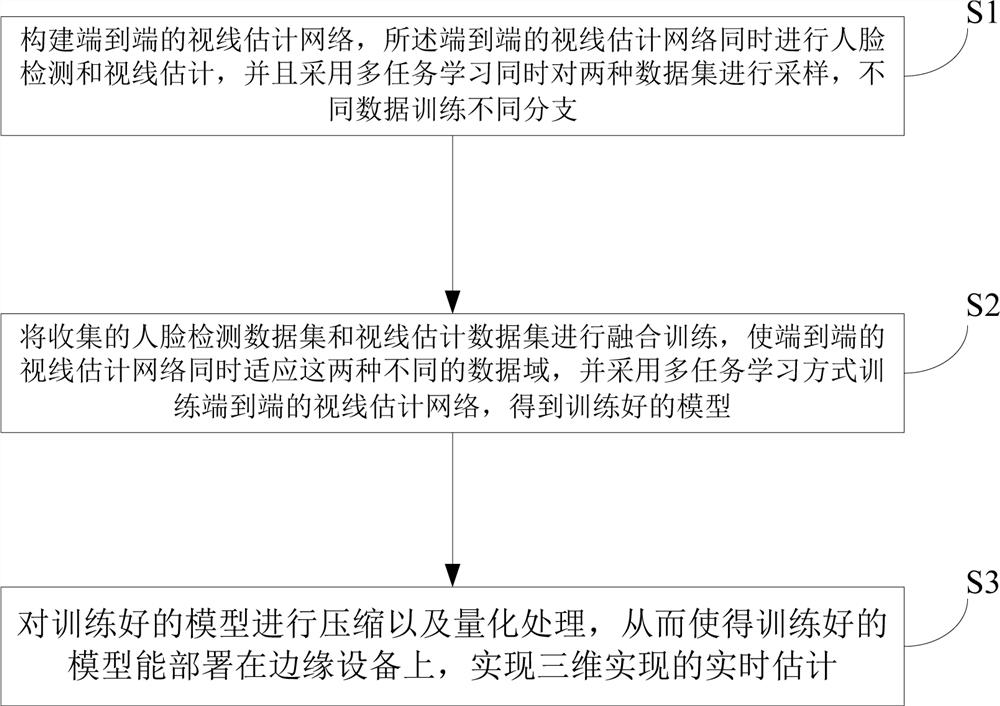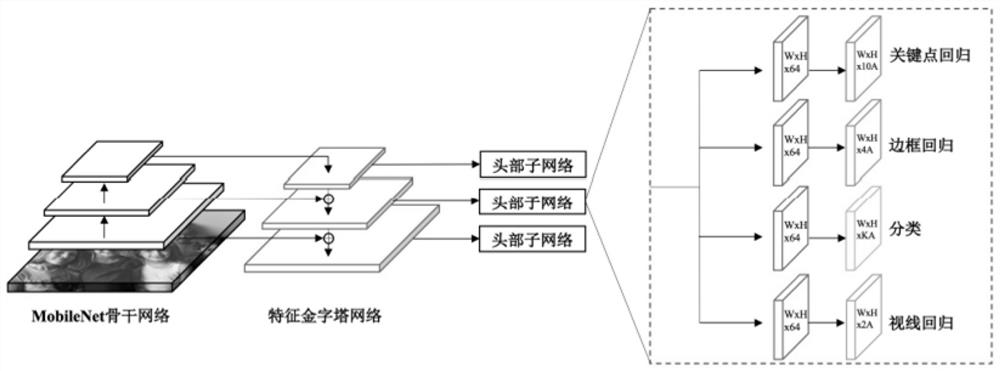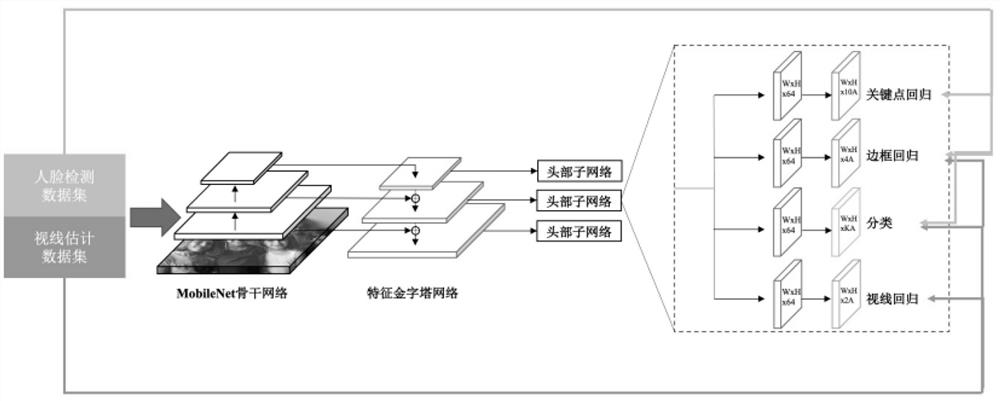Method and device for 3D line-of-sight estimation for resource-constrained scenes
A line-of-sight estimation, resource-oriented technology, applied in the field of artificial intelligence, can solve problems such as slow speed, many processes, and unfavorable line-of-sight estimation, and achieve the effect of improving speed, simplifying processes, and efficient line-of-sight estimation.
- Summary
- Abstract
- Description
- Claims
- Application Information
AI Technical Summary
Problems solved by technology
Method used
Image
Examples
Embodiment
[0068] Such as figure 1 As shown, this embodiment is a method for estimating a 3D line of sight with limited resource scenarios, and the method includes the following steps:
[0069] S1. Construct an end-to-end line of sight estimation network. The end-to-end line of sight estimation network performs face detection and line of sight estimation at the same time, and uses multi-task learning to sample two data sets at the same time, and trains different branches with different data;
[0070] Such as figure 2 As shown, the end-to-end line-of-sight estimation network includes a backbone network, a classification sub-network, a border regression sub-network and a line-of-sight estimation sub-network; the backbone network is used to convolute and calculate feature maps on the entire input image, and the classification sub-network The network is used to perform convolutional object classification on the output of the backbone network; the frame regression sub-network is used to pe...
PUM
 Login to View More
Login to View More Abstract
Description
Claims
Application Information
 Login to View More
Login to View More - R&D
- Intellectual Property
- Life Sciences
- Materials
- Tech Scout
- Unparalleled Data Quality
- Higher Quality Content
- 60% Fewer Hallucinations
Browse by: Latest US Patents, China's latest patents, Technical Efficacy Thesaurus, Application Domain, Technology Topic, Popular Technical Reports.
© 2025 PatSnap. All rights reserved.Legal|Privacy policy|Modern Slavery Act Transparency Statement|Sitemap|About US| Contact US: help@patsnap.com



